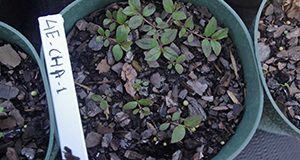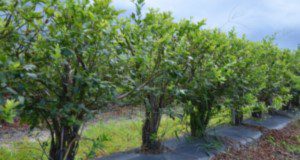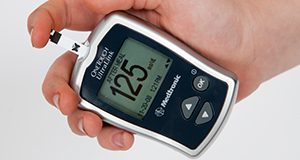Garden spurge is a prostrate, herbaceous, short-lived, warm-season annual weed commonly found in Florida landscapes, container nurseries, and other agricultural production areas. This 5-page article is written to aid green industry professionals and others in the identification and management of garden spurge in and around ornamental plants. Written by Thomas Smith, Chris Marble, Shawn Steed, and Nathan Boyd, and published by the UF/IFAS Environmental Horticulture Department, July 2020.
https://edis.ifas.ufl.edu/ep586
Tag: management
Pruning Southern Highbush Blueberry in Florida
Pruning is an essential part of blueberry production and is used to help establish new plantings; promote postharvest growth of new foliage and fruiting wood; balance vegetative and reproductive growth; reduce disease and certain insect pressure; assist in harvesting efficiency; and promote new cane growth and plant longevity. This new 3-page publication of the UF/IFAS Horticultural Sciences Department is a discussion of pruning practices on southern highbush blueberry in Florida. Written by Douglas A. Phillips and Jeffrey G. Williamson.
https://edis.ifas.ufl.edu/hs1359
Citrus Irrigation Management
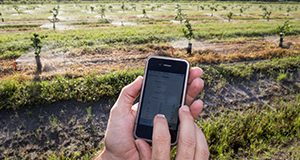 The chapter on irrigation management of citrus is largely taken from guidelines provided in SL253 on trees prior to Huanglongbing (HLB) prevalent conditions. A section has been added to cover recent findings on water use of trees affected by HLB and the impact this would have on the irrigation management considerations. This 6-page fact sheet discusses water supply, allowable soil water depletion, irrigation scheduling, soil moisture measurement, water budgeting, smartphone apps, irrigation strategies to improve nutrient uptake and reduce leaching, and irrigation management considerations for HLB-affected trees. Written by Davie Kadyampakeni, Kelly Morgan, Mongi Zekri, Rhuanito Ferrarezi, Arnold Schumann, and Thomas Obreza, and published by the UF/IFAS Soil and Water Sciences Department, September 2017.
The chapter on irrigation management of citrus is largely taken from guidelines provided in SL253 on trees prior to Huanglongbing (HLB) prevalent conditions. A section has been added to cover recent findings on water use of trees affected by HLB and the impact this would have on the irrigation management considerations. This 6-page fact sheet discusses water supply, allowable soil water depletion, irrigation scheduling, soil moisture measurement, water budgeting, smartphone apps, irrigation strategies to improve nutrient uptake and reduce leaching, and irrigation management considerations for HLB-affected trees. Written by Davie Kadyampakeni, Kelly Morgan, Mongi Zekri, Rhuanito Ferrarezi, Arnold Schumann, and Thomas Obreza, and published by the UF/IFAS Soil and Water Sciences Department, September 2017.
http://edis.ifas.ufl.edu/ss660
Sick Day Management for Adults with Diabetes Who Take Insulin
When people have type 1 or type 2 diabetes and take multiple daily insulin injections, their blood glucose levels can rise drastically due to a cold or another minor illness. This can result in serious health problems. The best way for people with diabetes to prevent a minor illness from becoming a major illness is to have a personalized sick day plan designed with their health care provider before they become ill. This 4-page fact sheet is a major revision that discusses ways in which illness affects diabetes control, development of a sick day plan, times to call your health care provider, checking blood glucose and urine ketones, medicines, and diet. Written by Nancy J. Gal and Linda B. Bobroff, and published by the UF Department of Family, Youth and Community Sciences, revised June 2017.
http://edis.ifas.ufl.edu/fy1281
Cressleaf Groundsel (Butterweed) Identification and Management in Pastures
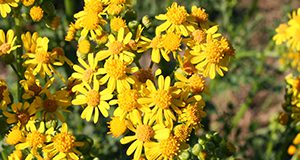 Butterweed is a winter annual that is toxic to both cattle and horses. This 2-page fact sheet provides an overview of the plant as well as herbicide recommendations. Written by Brent Sellers and Jay Ferrell, and published by the UF Agronomy Department, May 2016.
Butterweed is a winter annual that is toxic to both cattle and horses. This 2-page fact sheet provides an overview of the plant as well as herbicide recommendations. Written by Brent Sellers and Jay Ferrell, and published by the UF Agronomy Department, May 2016.
http://edis.ifas.ufl.edu/ag406
Florida Biosolids: Management and Land Application Rules
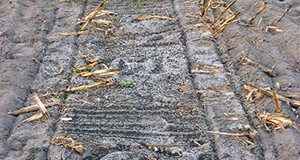 Biosolids are the liquid, semisolid, and solid fractions of the treated waste stream from a domestic wastewater treatment facility (WWTF). On August 29, 2010, the Florida Department of Environmental Protection (FDEP) formally adopted its rule for the management of wastewater biosolids, Chapter 62-640, Florida Administrative Code (F.A.C. 2010). This 6-page fact sheet from the Florida Biosolids series covers applicability of the rule, the intent of Chapter 62-640, F.A.C., land application requirements, biosolids storage, cumulative application limits, setback distances, pH, soil depth, runoff prevention, additional application site restrictions for Class B biosolids, NMPs, and special geographic areas. Written by John Hallas, Cheryl L. Mackowiak, and Ann C. Wilkie, and published by the UF Department of Soil and Water Science, October 2015.
Biosolids are the liquid, semisolid, and solid fractions of the treated waste stream from a domestic wastewater treatment facility (WWTF). On August 29, 2010, the Florida Department of Environmental Protection (FDEP) formally adopted its rule for the management of wastewater biosolids, Chapter 62-640, Florida Administrative Code (F.A.C. 2010). This 6-page fact sheet from the Florida Biosolids series covers applicability of the rule, the intent of Chapter 62-640, F.A.C., land application requirements, biosolids storage, cumulative application limits, setback distances, pH, soil depth, runoff prevention, additional application site restrictions for Class B biosolids, NMPs, and special geographic areas. Written by John Hallas, Cheryl L. Mackowiak, and Ann C. Wilkie, and published by the UF Department of Soil and Water Science, October 2015.
http://edis.ifas.ufl.edu/ss634
